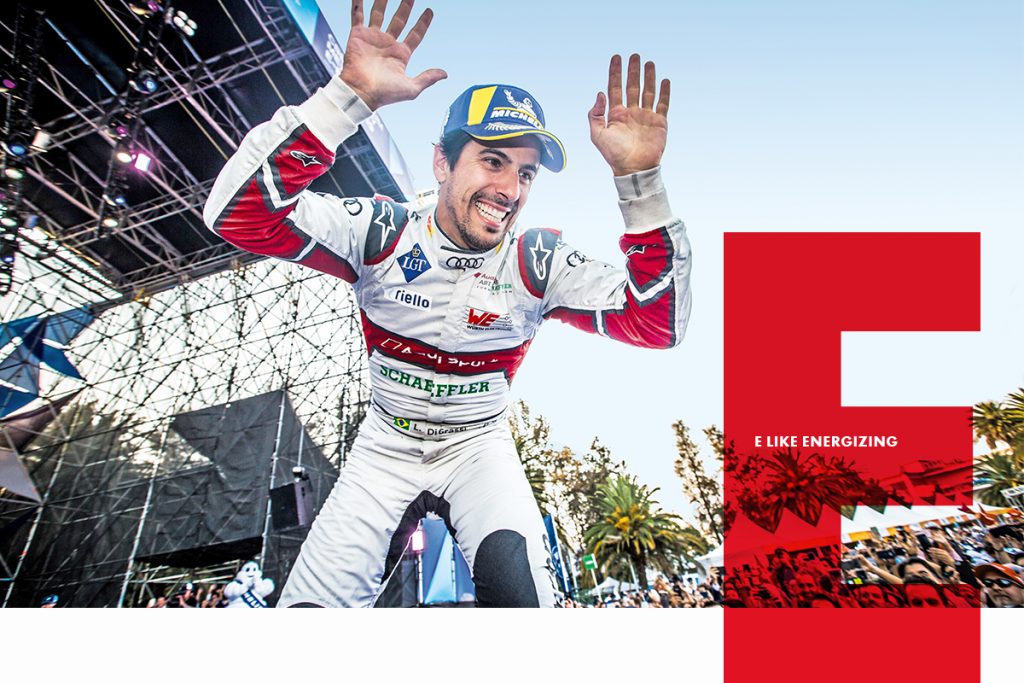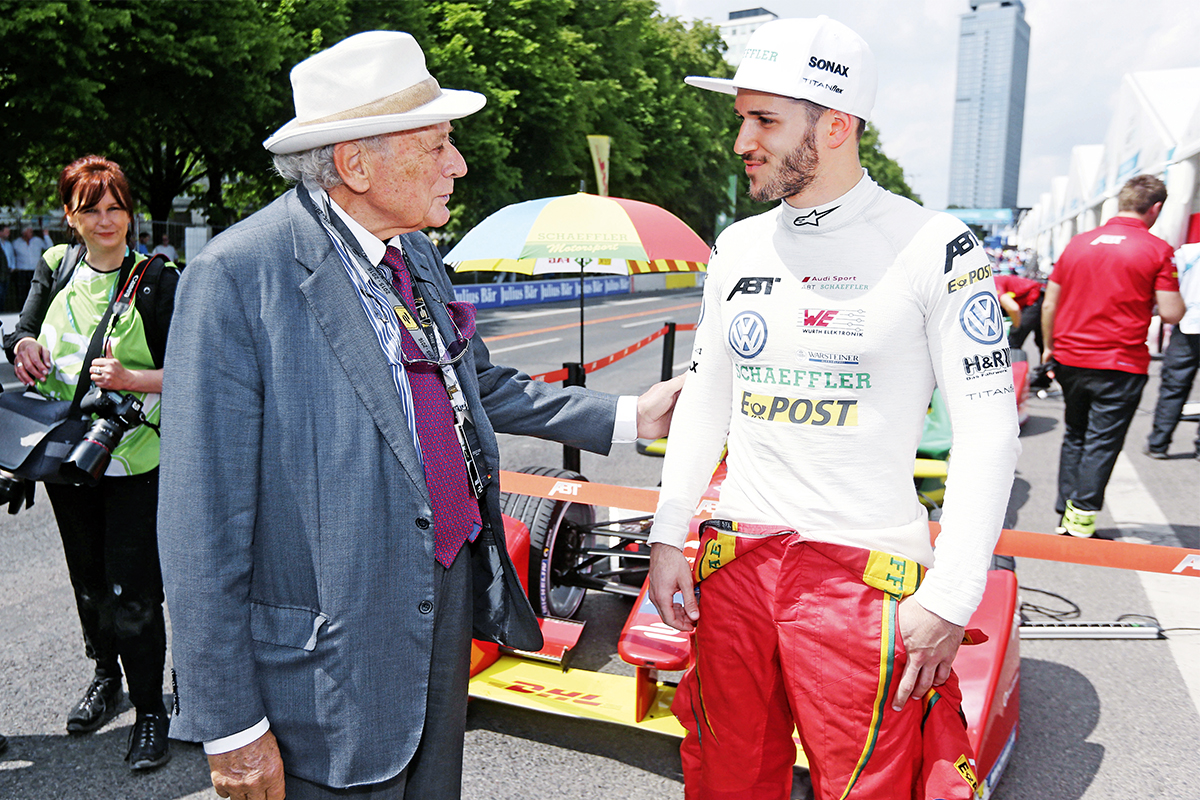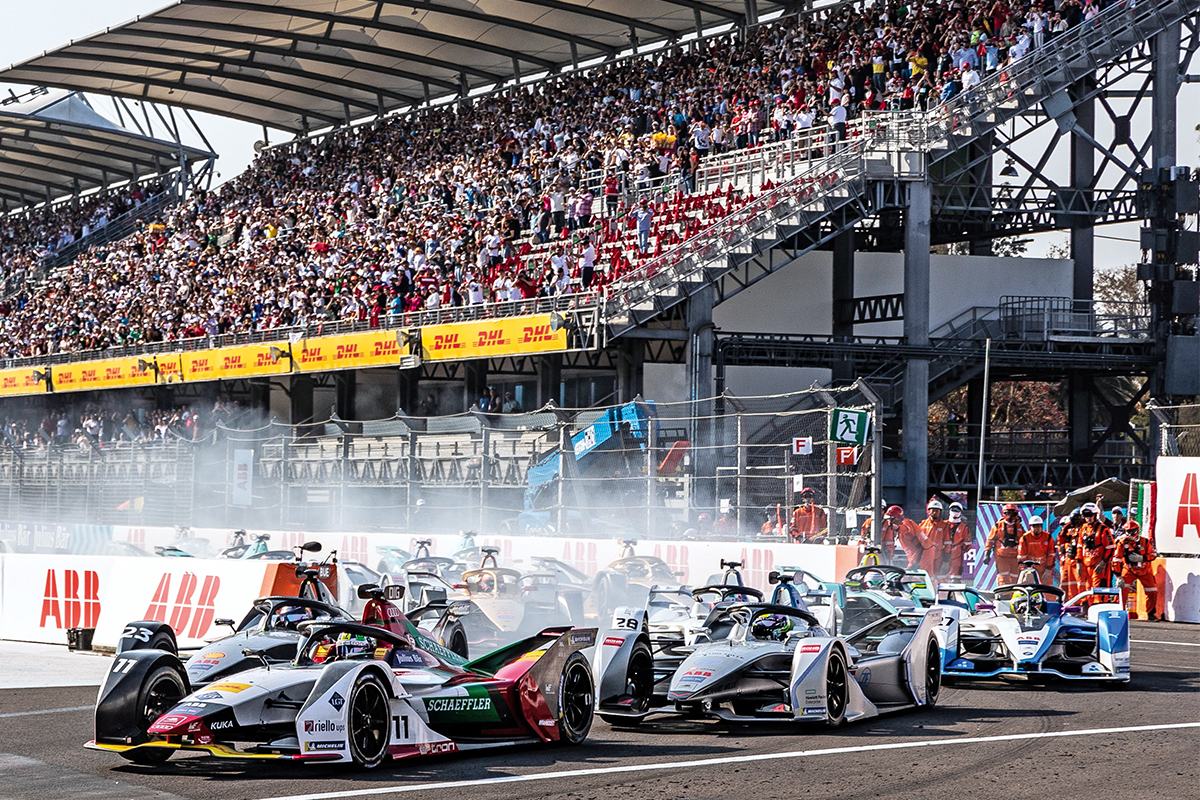The race for the future does not just take place at charging stations but also on the Formula E racetrack: a kind of Formula 1 for electric vehicles. Würth Elektronik eiSos has served as technology partner since the conception of this popular series and was already able to celebrate winning the world championship with the Audi team.
Did the Statue of Liberty really just wink as race car driver Lucas di Grassi heads for the next chicane parallel to the Manhattan skyline in his Audi e-tron race car outfitted with gear from Würth Elektronik eiSos? Welcome to the new world, welcome to a new formula for success. Formula E has achieved what Formula 1 still hopes to attain: performing in the most high-energy metropolis in the world. The Formula E racing series, the E-Prix, was the first motor race that was allowed to take place in New York City since 1896.
This alternative racing series made history yet again in Zurich: circuit races had been outlawed in Switzerland since the mid-50s until the city center was cleared out to make room for the start-up among the worldwide racing series.

Being part of writing motor sport history, there are no control units for this. Just people with visions. Würth Elektronik eiSos was at the starting line in September 2014 as the first racing championship for all-electric race cars, an initiative of the International Automobile Federation FIA, was kicked off in front of the Beijing Olympic Stadium, affectionately known as the Bird’s Nest. And after a short hour, they were already standing on the podium – both as the sponsor of the winning ABT Schaeffler Audi team led by Lucas di Grassi and as their partner in technology. Numerous electronic components carry out their work in the complex high-performance electric race cars. Because Formula E runs in line with the concept of bringing the races to the people and not vice versa, the racing circuits are usually located in the city centers and are set up specially for the purpose of the one-day spectacle.
THE RACES COME TO THE PEOPLE
Accordingly, the components for the cube-shaped high-power contacts, referred to as REDCUBE terminals, need to be particularly robust and shock resistant since they have to defy curbs, tram tracks or hard cobblestones and withstand high temperatures. Würth technology pays off. Last season, the ABT team, which has since been promoted to the official Audi racing team, secured the championship title. Lucas di Grassi has already won the driver title. The expectations are equally high for this racing season, which runs from winter 2018 until summer 2019.

Formula E is a more sustainable version of Formula 1, with increasingly more Grand Prix drivers discovering this type of motor sport for themselves. The main difference between the two series: Formula E’s brand essence is devoted to values such as sustainability, efficiency and technological progress. Therefore, these are entirely different concepts, united by a high level of fascination. This is evident in the participating circuits: At the end of the year, twelve racing teams will line up at the start, with Mercedes and Porsche battling alongside Audi and BMW for the e-mobility crown.
RACING CALENDAR – THE SECOND HALF OF THE SEASON:
11 MAY: MONTE CARLO
25 MAY: BERLIN
22 JUNE: BERN
13/14 JULY: NEW YORK
GOOSEBUMPS IN LIEU OF ENGINE NOISE
Visitors to a Formula E race prick up their ears as the track is cleared for the 22 race cars. But: Almost nothing can be heard besides a high buzzing sound and only a strong draft of air can be felt. Soundless motor sport is by nature more family friendly. The event’s compact format contributes to this, with the entire affair distributed over the course of an entire day, culminating in the 45-minute E-Prix in the late afternoon. The racing combines sports, technology and entertainment, all under the banner of new mobility. Children can have fun learning and investigating in the eVillage, located at the heart of the racetrack, where drivers, cars and innovative future technology are on display.
The competition allows more and more technological freedom, turning the race cars into bolting carriers of technology and thus representing a major driver behind electromobility as a whole. A key reason for which Alexander Gerfer, Chief Technology Officer at Würth Elektronik eiSos, is involved in Formula E: “We consider the partnership on an equal footing with Audi to be a unique testing lab for trying out components under extreme conditions and advancing new technological solutions.” His colleague Oliver Opitz, who is in charge of technical coordination, concretizes this idea using a practical example: “Battery capacity has doubled from 28 kWh to 54 kWh in five years, with the electric motor power increasing by 25 percent during this season. That is quite an amazing development.”
A new generation of vehicles was rolled out this year for the first time: longer lasting, even more spectacular. That is the allure, that is the great opportunity that Formula E itself has seized: creating something unprecedented. Project Manager Marion Wagner from Würth Elektronik eiSos, who has been on the ground since the beginning, reports several “goosebump moments.” At many points throughout the temporary racetracks, at which the race cars whoosh past the stands literally close enough to touch, there is hardly enough room for two of the sleek cars to fit next to one another. The fight for terrain is fiercely contested. This makes for tight tailgating, heightens the risk of conflict when passing, and ignites bitter duels. If your foot never leaves the gas, however, you will scarcely make it to the finish line. The drivers have to ration their power; efficient thinking and technique are decisive factors in this competition.

TWO HELMSMEN
Daniel Abt and Lucas di Grassi are the only driver team that has fought their way through all of the Formula E races in history side by side. Abt, 26, is the scion of the Kempter motor sport dynasty and won the ADAC Formel Masters series in 2009. Brazilian Di Grassi, 34, competed in 18 Formula 1 races for the Virgin Team, after which he was a development driver in Formula 1. He was the Formula E champion in the 2017/18 season.
For the drivers, it is a trial of wits and steering at the same time. Brazilian Lucas di Grassi was one of the first top drivers to commit to the Formula E series. He has not regretted his decision once. The pioneer explains how it is different from other racing series: “In Formula E, the rules ensure that all of the drivers have more or less the same material at their disposal. The best and worst cars are maybe thirty milliseconds apart, which is what makes the races so exhilarating.” In order liven things up even more, there is a special “attack mode.” Whoever is particularly popular among the spectators has an advantage: Based on an online vote, five drivers receive a substantial power boost for five seconds. That can be enough for a pivotal passing maneuver.

Once again, the sporting aspirations align with the vision of Würth Elektronik eiSos. “We aim to develop solutions of the future and transfer the expertise gained from motor sports to improved power electronics for our automotive division,” says Oliver Konz, Executive Vice President of the Würth Elektronik eiSos Group, with regard to the solution-oriented approach of their involvement. Christopher Becht, Head of Global Technology Partnerships for eMotorsport, adds: “In addition to the technology and the knowledge transfer, our objective is also to increase brand recognition for Würth Elektronik eiSos and to position ourselves as communication leaders in the electronics industry.”
From the vision to the mission, such solutions are devised in interdisciplinary project teams. The technology is refined together with the team, which is how the auxiliary battery and corresponding battery charger were developed for the power supply in the cockpit. Approximately one and a half years in advance, work is started on new technology to continuously improve performance. In motor sports, the high planning and production reliability has to be paired with a high level of flexibility and breakneck response times.
Anyone who needs to accommodate high-voltage power elements in limited space, as Würth does, bears a great deal of responsibility in any case: After all, even the nicest race car will not run without any power. High tension – in the truest sense of the word.

Flying the flag: Würth fans cheer on top driver Lucas di Grassi.

ROBERT FRIEDMANN
CHAIRMAN OF THE CENTRAL MANAGING BOARD OF THE WÜRTH GROUP
In the world of motor sports, things are often taken to the extreme, which is why it is hard to imagine a tougher competitive environment. Formula E plays a special role in all of this: It represents a race for viable future technologies, which are continuously subjected to the acid test at races across the globe. Würth Elektronik eiSos has been involved from the very start; after all, competitiveness and sustainability have always corresponded to the pioneering spirit in our company. The laurels for this are not only reflected in the medals won on the racetrack but also in the knowledge gained, which subsequently flows into our product portfolio. By virtue, every employee and customer is a winner.














